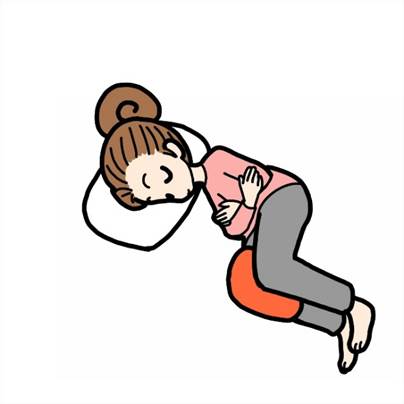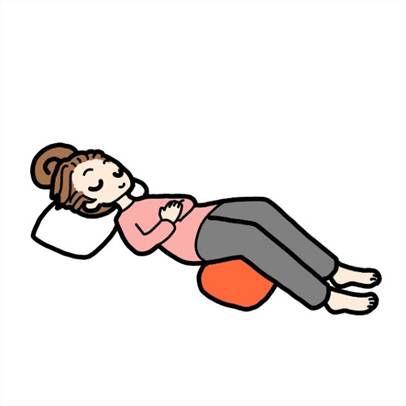Column 🛌How to Sleep Comfortably When You’ve Been Diagnosed with Lumbar Spondylosis?🛌
September 22, 2025
Lumbar spondylosis refers to low back pain caused by deformity of the spine.
This article explains the recommended sleeping positions for people affected by lumbar spondylosis.
Symptoms and causes of lumbar spondylosis
It is a condition in which age-related changes to the spine cause bone spurs (osteophytes) and deformity, leading to back pain.
As the deformity progresses, it may eventually lead to lumbar spinal stenosis.

Typical symptoms
The main symptoms of lumbar spondylosis are lower back pain, dull pain in the buttocks, and a general feeling of heaviness or fatigue. Symptoms are often most pronounced upon waking in the morning, when standing up, after becoming tired, or following prolonged sitting.
In some cases, pain or numbness extends from the lower back down to the legs.
If deformity progresses further, lumbar spinal stenosis can occur, causing intermittent claudication (pain when walking), sensory disturbances, or motor weakness.
Main causes
The primary causes of lumbar spondylosis are aging, one’s work environment, and physical activity.
As deformity advances, the intervertebral discs and nerves may be damaged, causing inflammation and degenerative changes in the surrounding joints and ligaments.
Sleeping positions for patients with lumbar spondylosis
When sleeping on your side
Slightly curl your body and place a cushion between the knees. This will help stabilize the pelvis and reduce strain on the lower back.
Placing a rolled towel at the waistline will also help prevent excessive arching of the back and provide stable support for the lumbar spine.

When sleeping on your back
Sleep on your back with your knees slightly bent. This will help reduce excessive lumbar arching and lower stress on the back.

Other Considerations
Avoid overly soft bedding, which can increase the strain on the lower back and worsen symptoms. A firmer mattress is recommended instead.
Change positions regularly during sleep. Avoid staying in one posture for too long; turning over helps distribute pressure and reduce strain.
If you have been diagnosed with lumbar spondylosis or are struggling with persistent low back pain, please consider our clinic for evaluation and treatment options.



